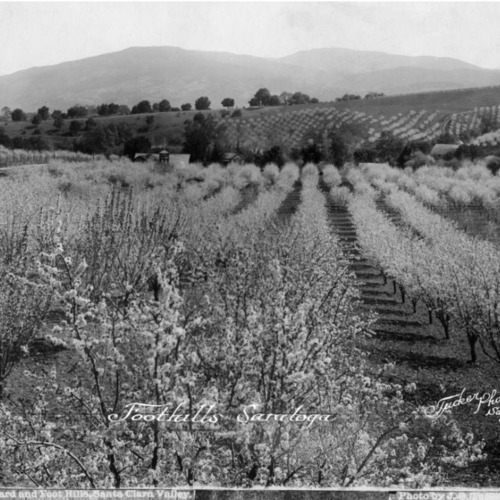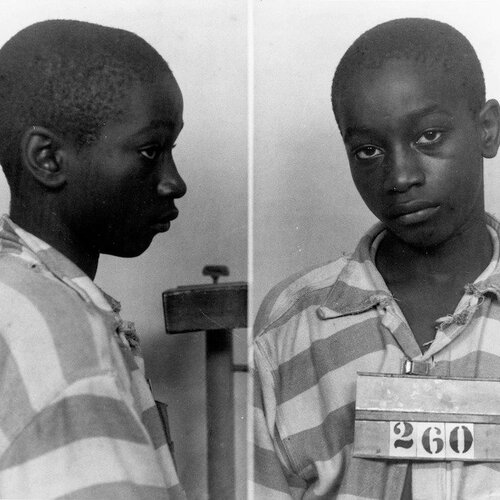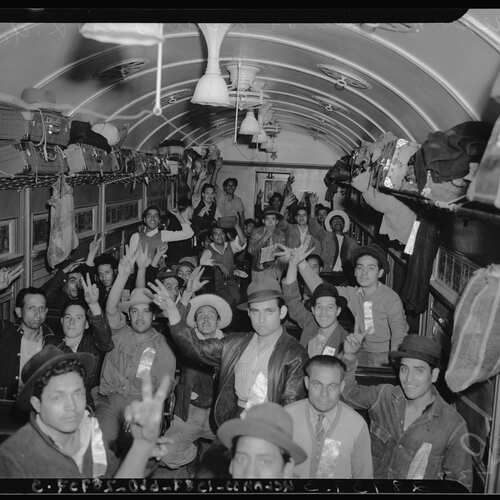Browse Exhibits (171 total)
The Ethnomusicology of Kendrick Lamar
I am interested in exploring the themes of public & social justice with Lamar's lyrics that draw from an intersection of American black political and social struggles interwoven with African history and cultural references.
Italian Labor and Labor Activism in California during the 1800's and Early 1900's

In the late 1800's and early 1900's there was an influx of Italian Americans into the western United States, specifically California. They became involved in many industries, primarily: fishing, wine, and canning. They were also present in other industries, such as mining and lumber, although not as prevalent as the ones mentioned prior. The fishing, canning, and wine industries were vital to regional economies in the U.S., with Italian Americans playing a central role. Their expertise in fishing and winemaking helped establish thriving industries, particularly in California, while the canning sector expanded due to their labor, ensuring the broader distribution of essential goods like seafood and wine. These industries not only drove economic growth but also shaped the cultural and social landscapes of their communities.
Because of the capitalist nature of the United States at the time, corporations tended to prioritize profit over worker safety and rights. As a result, labor activism and a culture of unionization and strikes developed, and industries worked by Italian Americans/Italian immigrants was no exception. A key strike led and arranged by Italian immigrants, the McCloud strike, is a prime example of unionization and labor activism led by Italians.
Italian American Views of Fascism Leading to WWII
As Mussolini gained power in Italy, the wave of Fascism expanded further than Europe. Many Italian Americans, particularly in California, where prominent and influential figures resided, were in support of Fascisma as it brought world recognition to their homeland, previously looked down upon.
This exhibit attempts to provide a detailed view of this sentiment over time and shed light on how it impacted Italian Americans.
The Italian American Wine Industry in the 19-20th Century
Our area of interest is both what the wine industry did for the Italian Immigrants during the 1800s and 1900s, and also what the Italians provided to the wine industry. They brought knowledge, skill, and foreign grapes with them. The Californian wine industry would not have grown or have been as successful without these Italians. The most successful winemakers were in the state of California, as there were both great opportunities and the landscape was the perfect environment to cultivate the industry. Although there was great financial success, this would not be without setbacks and challenges. Even through these barriers, Italian American winemakers were determined to succeed, no matter the cost.
Circulating Memories Through Food: The Italian American Experience in California

Everyone needs to eat. But food is not just a means of sustenance in order for us to perform our daily functions; it is also a method in which we develop an identity and grow closer to the cultures we identify with. The universality of food allows it to act as a looking glass into the cultures of others through a lens that makes it easy to draw connections, and eliminate misconceptions. The importance of food is omnipresent within the Italian American community as a means of maintaining a sense of belonging with other Italian American and building connections with those of other cultural backgrounds. The act of passing memories down through food is greatly present in Italian American culture through various areas, including agricultural practices, food writing, and consumer goods or restaurants.
This exhibit explores the various ways in which the Italian American experience is disseminated through food and the ways in which food has influenced the experiences of Italian Americans in California. Furthermore, this exhibit explores the role of food in encapsulating memory, and how these memories influence perceptions of Italian Americans from those within and outside of the community. This exhibit touches on the role of food in bringing various cultures together and the ways in which food allows one to embrace and encourage diversity through food practices.
In the section entitled “Growing Apricots in the Santa Clara Valley,” we discuss the lost history of the orchards that once thrived in what is now known as Silicon Valley. These orchards provided a variety of fruits and nuts that were grown on the vast land, which has now been built on for the benefit of new technological innovations. This section of our exhibit talks about the history of these orchards, as well as the Italian immigrants who put their hard work and expertise into keeping them thriving. It discusses both Italian men's and women’s contributions to the land, as well as my personal experiences with this topic.
In the section entitled “Corporate Food Contributions,” we discuss how Italian immigrants were impacted and how they impacted the local food cultures around them, specifically focussing on the corporate impacts. We dive into the creation of Eataly and how the unique experiences in this store have aimed to bring part of Italy to their location in order to try and provide a taste of Eataly. We also explore how Eataly offers a place to learn about food, culture, and life through food.
In the section entitled “Encapsulating Memories in Food Writing,” we discuss the ways in which the Italian American experience is shared and remembered through food writing. Particularly, we share how making Italian food relevant to one’s region became an act of survival of regional pride for those who immigrated to the United States and how food writing can correct popular misconceptions of Italian culture and food preparation through Luisa Giulianetti’s Agrodolce. We also explore how food memoirs can provide insight into the difficulties of assimilation and feeling close to one’s culture through Sandra M. Gilbert’s novel The Culinary Imagination. Lastly, we demonstrate how food writing can create the space needed to build bridges between cultures, through bonding around similar food beliefs and practices, particularly between immigrant groups.
1960 and 70s Counter Culture

The countercultural movement of the 1960s and early 1970s played and still plays a crucial role in shaping modern American society. It marked a fast departure from traditional thinking and was driven by the youth of America against traditional establishment, it was heavily influenced by the Vietnam War, civil rights struggles, and a desire for freedom, peace, and social equality. This movement not only revolutionized music, fashion, and art but also left a lasting impact on political thought and social values.
Capital Punishment Exhibit

In its neverending pursuit of "civility," the United States has grappled with the concept of capital punishment for over two centuries. Society has grappled with moral, legal, and philosophical debates over whether governments should have the power to execute those deemed beyond redemption. The struggle to reconcile justice with humanity continues to challenge modern society, but this struggle can only be understood by examining the history of such cultural and societial shifts surrounding the death penalty.
Each new method promised to be more humane, more civilized than the last - from the gallows to the electric chair, from the gas chamber to lethal injection. But beneath these claims lies a complex story of competing interests, institutional power struggles, and changing social values.
For the first century and a half of the United States' lifespan, executions were public events that drew thousands of spectators. Hanging days were marked by solemn processions, sermons, and last speeches. Crowds gathered from miles around to witness justice being served. But by the mid-1800s, growing concerns about crowd behavior and changing sensibilities led states to move the majority executions behind prison walls. It wouldn't be until 1936 till all executions would be privatized.
This transition wasn't simple. Local sheriffs often resisted privatization, newspapers fought for access, and the public demanded to know what happened in the death chamber. The result was a unique compromise: executions would be private but witnessed by select observers and reported by the press.
As execution methods evolved, so did the competing demands placed on them. States sought legitimacy and control. The press insisted on transparency, furthering a fascination with the condemned. The public wanted reassurance that justice was both effective and civilized. Medical professionals alternately embraced and rejected involvement.
This digital exhibit traces that complex evolution through historical records, newspaper accounts, photographs, and scholarly research. I examine how various forces—state authorities, local officials, the media, and the public—shaped the way the United States "does death." From crowded town squares to sterile prison chambers, from public ritual to clinical procedure, the story of American execution practices reveals much about how our society has balanced justice, power, and our humanity.
Conflict during the California Gold Rush

Eureka! This exclamation is California's state motto which originates from when miners would strike gold during the California Gold Rush. The California Gold Rush lasted for about 7 years, starting in early 1848 and ending in 1855. Word of gold in California spread far and wide very rapidly. Thus, people from all over the world traveled to various parts of California in hopes of getting rich.
However, some of these new California immigrant groups, like the Chinese and African Americans, faced discrimination. At the same time, already inhabited indigenous groups in California were fighting for their own preservation against incoming white settlers. This exhibit examines how the California Gold Rush was not as glamorous as it appeared.
Map of California Gold Regions
U.S. Civil War - Prisoner of War Camps

The U.S. Civil War was an economical and ethical dispute between the North and South of the United States. The Confederates (Southern states) relied heavily on slave labor for their agricultural industry, whereas the Union (Northern states) maintained an industrial economy. Industrially, the North was surpassing the South. The demand for the United States to be economically and technologically united pulled the two sides apart and then began ethical arguments as to why the South needed to abandon the use of slave labor as well as adopt Northern industrialization. The two sides split and from it we have the history of emancipation and the U.S. civil war. This project's focus will hone in on the conditions and stories of U.S. prisoners of war during the Civil War.
Andersonville Prisoner of War Camp is a notorious Confederate POW Camp in which thousands of Union soldiers died. The camp lacked the infrastructure, resources, and ethics to maintain the amount of prisoners. The lack of order caused mass death in the camp. Thousands of Union soldiers perished from starvation, dehydration, infection, and illness. The prisoners were buried in mass graves to keep up with the amount of deaths. Nearly all POW camps during the U.S. Civil War struggled with poor infrastructure, creating issues maintaining prisoners' conditions and lives. Andersonville's death toll earned itself a place in U.S. history.
Map depicts division of the U.S. in the Civil War. Included to provide further context for overarching project.
Red - Confederate States
Blue - Union States
*Click on image for a better view

